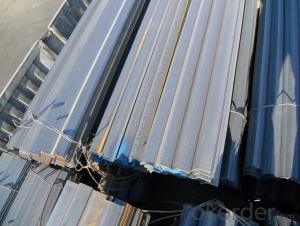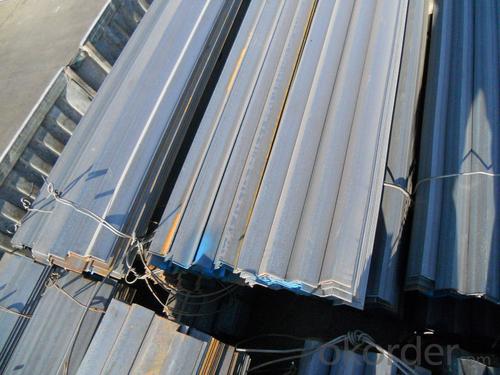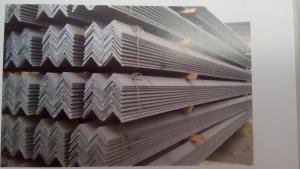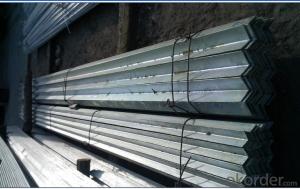Hot Rolled Steel Angle Bar Equal Angle Bar Unequal Angle Bar GB/JIS/ASTM/DIN
- Loading Port:
- Tianjin
- Payment Terms:
- TT OR LC
- Min Order Qty:
- 50 m.t.
- Supply Capability:
- 10000 m.t./month
OKorder Service Pledge
OKorder Financial Service
You Might Also Like
Specification
Product Description:
OKorder is offering Hot Rolled Steel Angle Bar Equal Angle Bar Unequal Angle Bar GB/JIS/ASTM/DIN at great prices with worldwide shipping. Our supplier is a world-class manufacturer of steel, with our products utilized the world over. OKorder annually supplies products to European, North American and Asian markets. We provide quotations within 24 hours of receiving an inquiry and guarantee competitive prices.
Product Applications:
Hot Rolled Steel Angle Bar Equal Angle Bar Unequal Angle Bar GB/JIS/ASTM/DIN are ideal for structural applications and are widely used in the construction of buildings and bridges, and the manufacturing, petrochemical, and transportation industries.
Product Advantages:
OKorder's Hot Rolled Steel Angle Bar Equal Angle Bar Unequal Angle Bar GB/JIS/ASTM/DIN are durable, strong, and resist corrosion.
Main Product Features:
· Premium quality
· Prompt delivery & seaworthy packing (30 days after receiving deposit)
· Corrosion resistance
· Can be recycled and reused
· Mill test certification
· Professional Service
· Competitive pricing
Product Specifications:
Chinese Standard (H*W*T) | Weight (Kg/m) | 6m (pcs/ton) | Light I (H*W*T) | Weight (Kg/m) | 6m (pcs/ton) | Light II (H*W*T) | Weight (Kg/m) | 6M |
100*68*4.5 | 11.261 | 14.8 | 100*66*4.3 | 10.13 | 16.4 | 100*64*4 | 8.45 | 19.7 |
120*74*5.0 | 13.987 | 11.9 | 120*72*4.8 | 12.59 | 13.2 | 120*70*4.5 | 10.49 | 15.8 |
140*80*5.5 | 16.89 | 9.8 | 140*78*5.3 | 15.2 | 10.9 | 140*76*5 | 12.67 | 13.1 |
160*88*6 | 20.513 | 8.1 | 160*86*5.8 | 18.46 | 9 | 160*84*5.5 | 15.38 | 10.8 |
180*94*6.5 | 24.143 | 6.9 | 180*92*6.3 | 21.73 | 7.6 | 180*90*6 | 18.11 | 9.2 |
200*100*7 | 27.929 | 5.9 | 200*98*6.8 | 25.14 | 6.6 | 200*96*6.5 | 20.95 | 7.9 |
220*110*7.5 | 33.07 | 5 | 220*108*7.3 | 29.76 | 5.6 | 220*106*7 | 24.8 | 6.7 |
250*116*8 | 38.105 | 4.3 | 250*114*7.8 | 34.29 | 4.8 | 250*112*7.5 | 28.58 | 5.8 |
280*122*8.5 | 43.492 | 3.8 | 280*120*8.2 | 39.14 | 4.2 | 280*120*8 | 36.97 | 4.5 |
300*126*9 | 48.084 | 3.4 | 300*124*9.2 | 43.28 | 3.8 | 300*124*8.5 | 40.87 | 4 |
320*130*9.5 | 52.717 | 3.1 | 320*127*9.2 | 48.5 | 3.4 | |||
360*136*10 | 60.037 | 2.7 | 360*132*9.5 | 55.23 | 3 |
Packaging & Delivery of Angle Steel
1. Transportation: the goods are delivered by truck from mill to loading port, the maximum quantity can be loaded is around 40MTs by each truck. If the order quantity cannot reach the full truck loaded, the transportation cost per ton will be little higher than full load.
2. With bundles and load in 20 feet/40 feet container, or by bulk cargo, also we could do as customer's request.
3. Marks:
Color mark: There will be color marking on both end of the bundle for the cargo delivered by bulk vessel. That makes it easily to distinguish at the destination port.
Tag mark: There will be tag mark tied up on the bundles. The information usually including supplier logo and name, product name, made in China, shipping marks and other information request by the customer.
If loading by container the marking is not needed, but we will prepare it as customer request.
FAQ:
Q1: Why buy Materials & Equipment from OKorder.com?
A1: All products offered byOKorder.com are carefully selected from China's most reliable manufacturing enterprises. Through its ISO certifications, OKorder.com adheres to the highest standards and a commitment to supply chain safety and customer satisfaction.
Q2: How do we guarantee the quality of our products?
A2: We have established an advanced quality management system which conducts strict quality tests at every step, from raw materials to the final product. At the same time, we provide extensive follow-up service assurances as required.
Q3: How soon can we receive the product after purchase?
A3: Within three days of placing an order, we will begin production. The specific shipping date is dependent upon international and government factors, but is typically 7 to 10 workdays.
Q4: What makes stainless steel stainless?
A4: Stainless steel must contain at least 10.5 % chromium. It is this element that reacts with the oxygen in the air to form a complex chrome-oxide surface layer that is invisible but strong enough to prevent further oxygen from "staining" (rusting) the surface. Higher levels of chromium and the addition of other alloying elements such as nickel and molybdenum enhance this surface layer and improve the corrosion resistance of the stainless material.
Q5: Can stainless steel rust?
A5: Stainless does not "rust" as you think of regular steel rusting with a red oxide on the surface that flakes off. If you see red rust it is probably due to some iron particles that have contaminated the surface of the stainless steel and it is these iron particles that are rusting. Look at the source of the rusting and see if you can remove it from the surface.
Images:
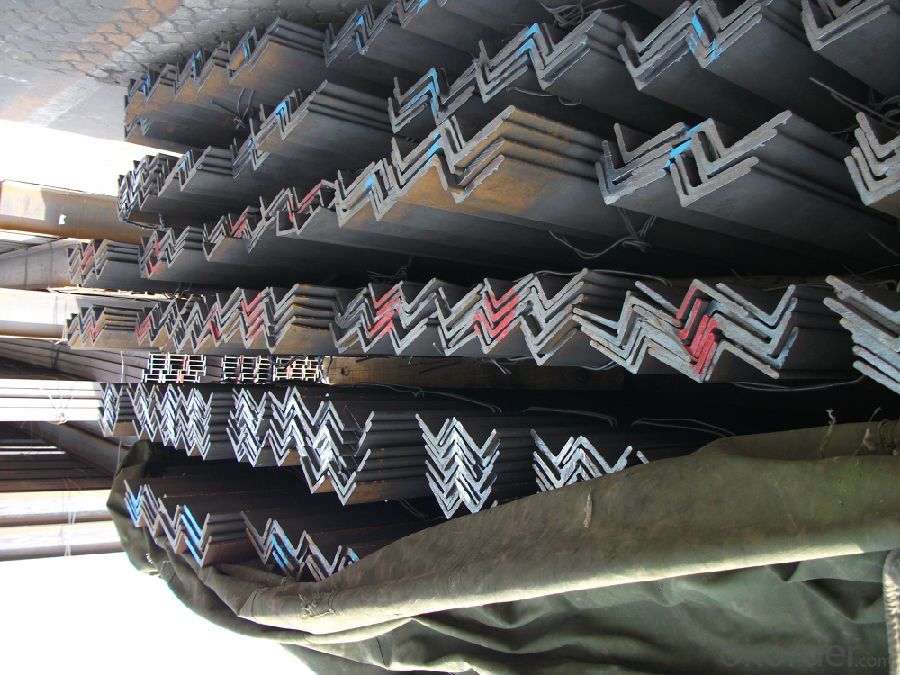
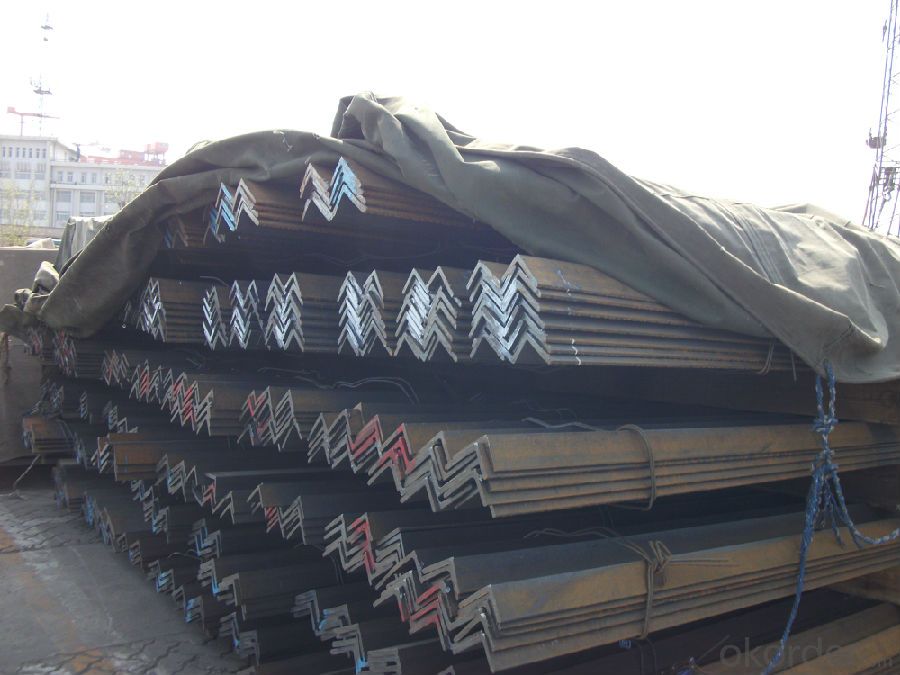
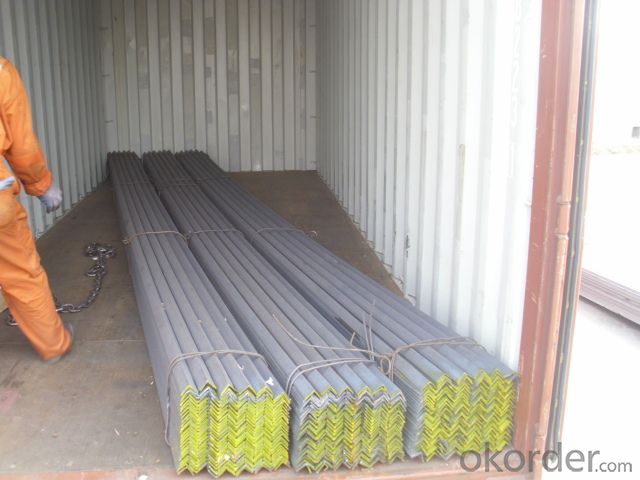
- Q: Can steel angles be used for signposts and traffic signals?
- Yes, steel angles can be used for signposts and traffic signals. Steel angles are commonly used in construction and engineering projects due to their strength and durability. They provide excellent support and stability, making them suitable for applications such as signposts and traffic signals that need to withstand various weather conditions and potential impacts. Additionally, steel angles can be easily customized and fabricated to meet the specific requirements of different signpost and traffic signal designs, making them a versatile choice for these structures. Overall, steel angles are a reliable and commonly used material for signposts and traffic signals due to their strength, durability, and versatility.
- Q: Can steel angles be used in playground equipment?
- Indeed, playground equipment can indeed incorporate steel angles. Steel angles find frequent application within the construction sector owing to their robustness, longevity, and adaptability. They can effectively offer structural reinforcement and steadiness to diverse play structures, including slides, climbing apparatus, swings, and playsets. By welding or bolting steel angles together, a resilient framework can be fashioned, capable of withstanding the dynamic loads exerted by playing children. Furthermore, these steel angles can be coated or painted to ensure resistance against corrosion, while simultaneously augmenting the visual allure of the playground equipment.
- Q: Are steel angles resistant to wind loads?
- Yes, steel angles are resistant to wind loads. Steel angles are commonly used in construction for their strength and stability. When properly designed and installed, steel angles provide structural support and can effectively resist the forces exerted by wind. The shape and geometry of steel angles provide rigidity and stability, making them capable of withstanding wind loads without significant deformation or failure. Additionally, steel angles can be reinforced and connected to other structural elements, further enhancing their resistance to wind loads.
- Q: Can steel angles be used in outdoor or exposed applications?
- Steel angles can indeed be utilized in outdoor or exposed settings. Typically, they are crafted from galvanized steel, which is covered with a protective zinc layer. This zinc coating aids in averting corrosion and rust, rendering them fitting for outdoor purposes. Moreover, steel angles possess robustness and sturdiness, making them appropriate for a range of applications including construction, infrastructure, and outdoor furnishings. Nonetheless, it is crucial to carry out regular maintenance and inspections to detect any indications of corrosion or harm, taking appropriate measures to forestall possible problems.
- Q: What are the common applications of steel angles in architecture?
- Due to their versatility and strength, steel angles are extensively utilized in architecture for various purposes. Here are some common applications of steel angles in architecture: 1. Building construction often relies on steel angles as structural support elements. By welding or bolting them together, a robust framework is formed, providing the necessary strength and stability to the structure. 2. Steel angles are commonly employed in framing applications, such as constructing door and window frames, as well as roof trusses. They ensure rigidity and support, ultimately contributing to the stability and longevity of the overall structure. 3. Reinforcing concrete structures is another popular use of steel angles. Embedding them into concrete walls, columns, and beams enhances their load-bearing capacity and resistance to deformation. 4. Staircases and handrails are frequently constructed using steel angles. These angles form a sturdy framework that guarantees the safety and stability of these architectural elements. 5. Steel angles are also employed for architectural detailing purposes. They can be utilized to create decorative elements like cornices, brackets, and ornamental features, which enhance the aesthetic appeal of the building. 6. In industrial settings, such as factories and warehouses, steel angles are utilized to create robust platforms, mezzanines, and equipment supports. In summary, steel angles are a versatile and reliable material that offers numerous benefits for architectural applications. Their strength, durability, and flexibility make them an ideal choice for a wide range of architectural structures and features.
- Q: What are the weight per meter calculations for steel angles?
- The weight per meter calculations for steel angles depend on the dimensions of the angle and the density of the steel being used. To calculate the weight per meter of a steel angle, you need to know the dimensions of the angle, specifically the thickness, width, and length. The formula to calculate the weight per meter is: Weight per meter = (Thickness x Width x Length) x Density The density of steel varies depending on the type of steel being used. The most common type of steel used for angles is mild steel, which has a density of approximately 7.85 grams per cubic centimeter (g/cm³) or 7850 kilograms per cubic meter (kg/m³). For example, let's say we have a steel angle with a thickness of 10 millimeters (mm), a width of 100 mm, and a length of 1 meter (1000 mm). Using the formula and assuming a density of 7850 kg/m³, the weight per meter would be: Weight per meter = (10 mm x 100 mm x 1000 mm) x 7850 kg/m³ Weight per meter = 10,000,000 mm³ x 7850 kg/m³ Weight per meter = 78,500,000,000 mm³/kg To convert the weight to a more common unit, we can divide by 1,000,000 to get the weight per meter in kilograms: Weight per meter = 78,500,000,000 mm³/kg / 1,000,000 Weight per meter = 78,500 kg/m Therefore, the weight per meter of this steel angle would be 78,500 kilograms.
- Q: Are steel angles available in non-standard sizes or custom shapes?
- Non-standard sizes or custom shapes of steel angles are indeed available. Although standard sizes of steel angles are commonly found in the market, there are manufacturers and suppliers who offer the flexibility to produce angles in non-standard sizes or custom shapes. This allows customers to fulfill their specific project requirements, be it for structural, architectural, or other applications. Custom shapes can range from unequal leg lengths to curved angles or angles with specific hole patterns. These non-standard sizes or custom shapes may necessitate special manufacturing processes, longer lead times, and potentially higher costs compared to standard sizes. Nevertheless, the availability of steel angles in non-standard sizes or custom shapes empowers customers to address unique design needs and achieve desired outcomes.
- Q: What is the process of punching holes in steel angles?
- The process of punching holes in steel angles typically involves using a specialized machine called a punch press. The steel angle is securely clamped into the machine, and then a punch and die set is aligned with the desired location for the hole. The machine is then activated, and the punch is driven into the steel angle, creating a hole. This process can be repeated multiple times to create multiple holes in the steel angle, if needed.
- Q: What are the different types of steel angles used in storage systems?
- There are several types of steel angles commonly used in storage systems, including equal angles, unequal angles, and L-shaped angles. These angles provide structural support and stability to the storage systems, allowing for efficient and organized storage of various items.
- Q: Are steel angles suitable for manufacturing support brackets for HVAC systems?
- Indeed, steel angles prove to be fitting for the production of support brackets designed for HVAC systems. Renowned for their robustness, longevity, and ability to withstand corrosion, steel angles present an ideal choice for deployment in support brackets. They afford the essential structural reinforcement required to bear the weight of HVAC components and guarantee stability. Furthermore, steel angles allow for effortless fabrication and customization to fulfill exact bracket design specifications. Their versatility and cost-effectiveness contribute to their widespread preference in the manufacturing of support brackets for HVAC systems.
Send your message to us
Hot Rolled Steel Angle Bar Equal Angle Bar Unequal Angle Bar GB/JIS/ASTM/DIN
- Loading Port:
- Tianjin
- Payment Terms:
- TT OR LC
- Min Order Qty:
- 50 m.t.
- Supply Capability:
- 10000 m.t./month
OKorder Service Pledge
OKorder Financial Service
Similar products
Hot products
Hot Searches
